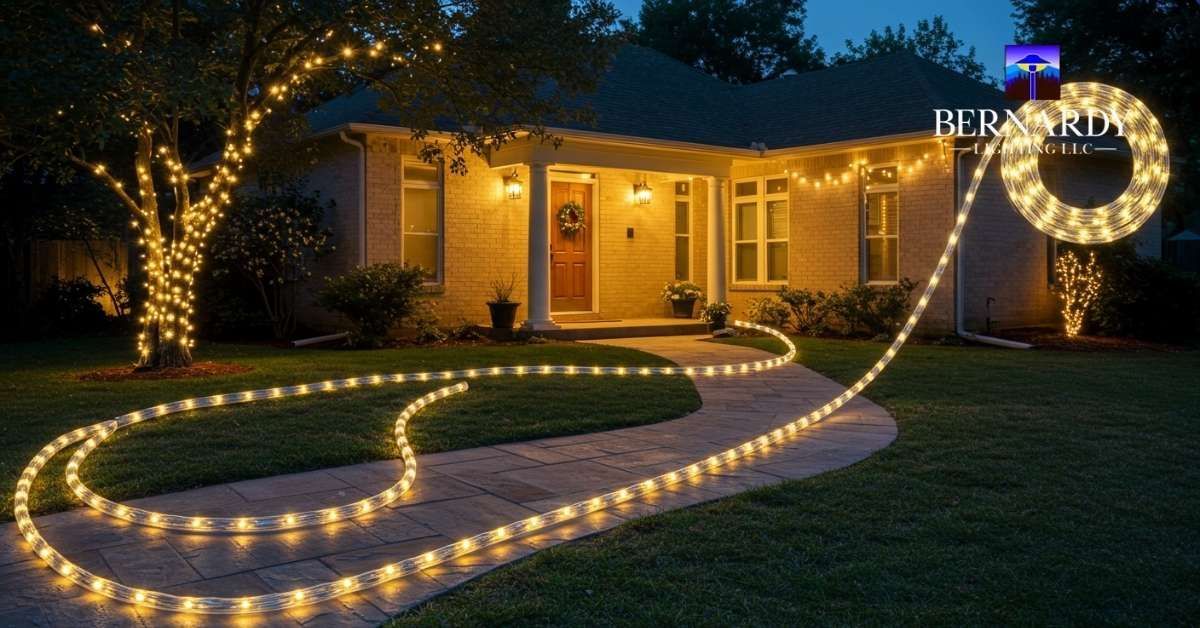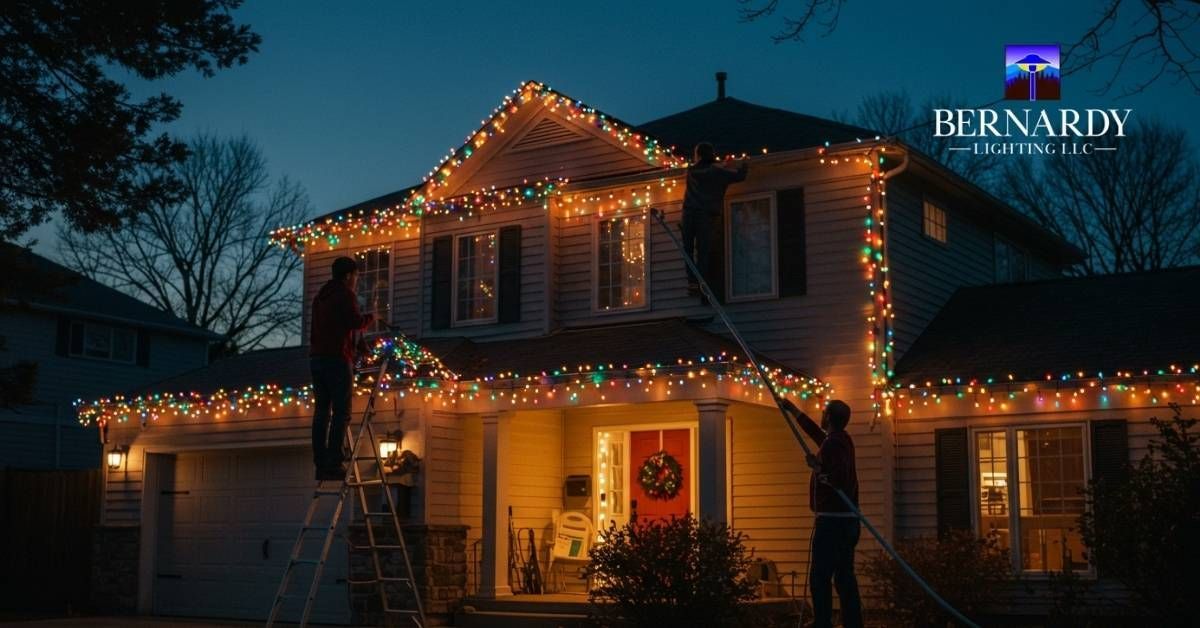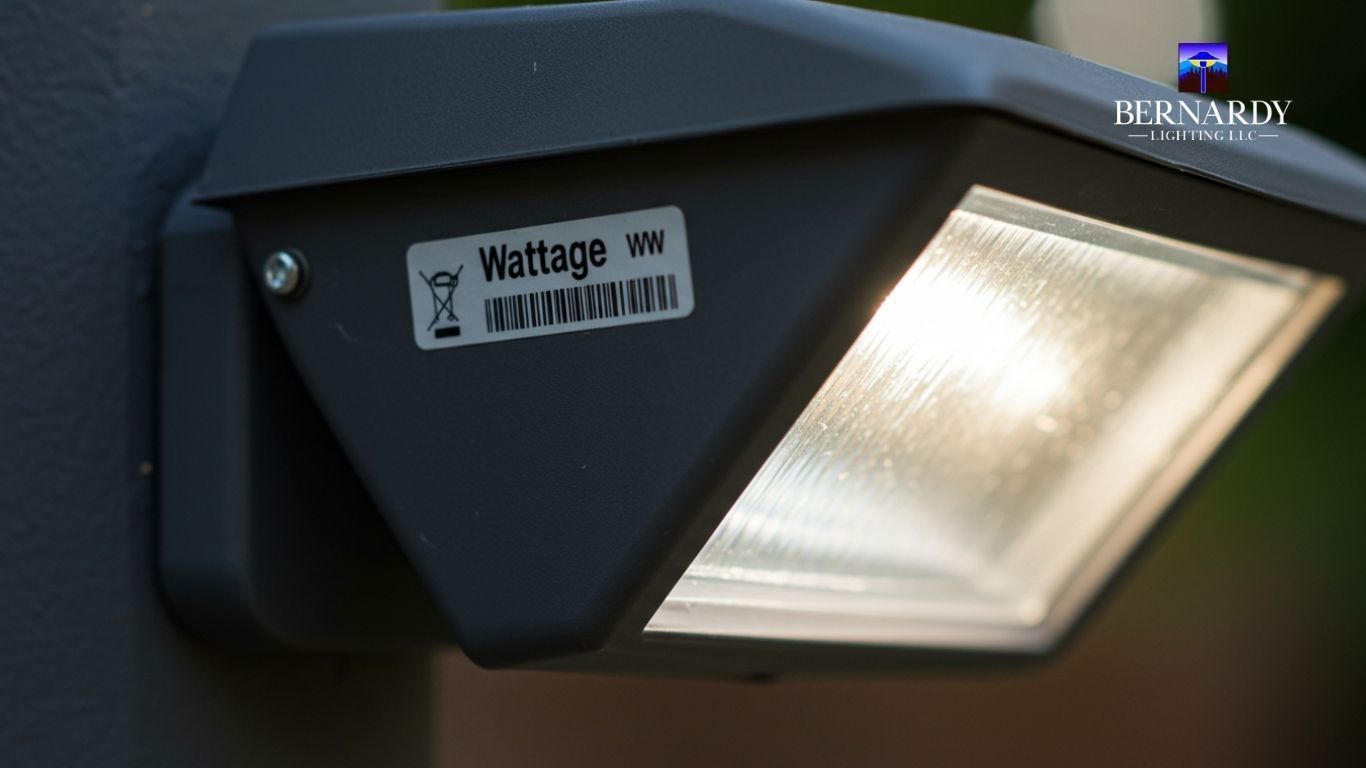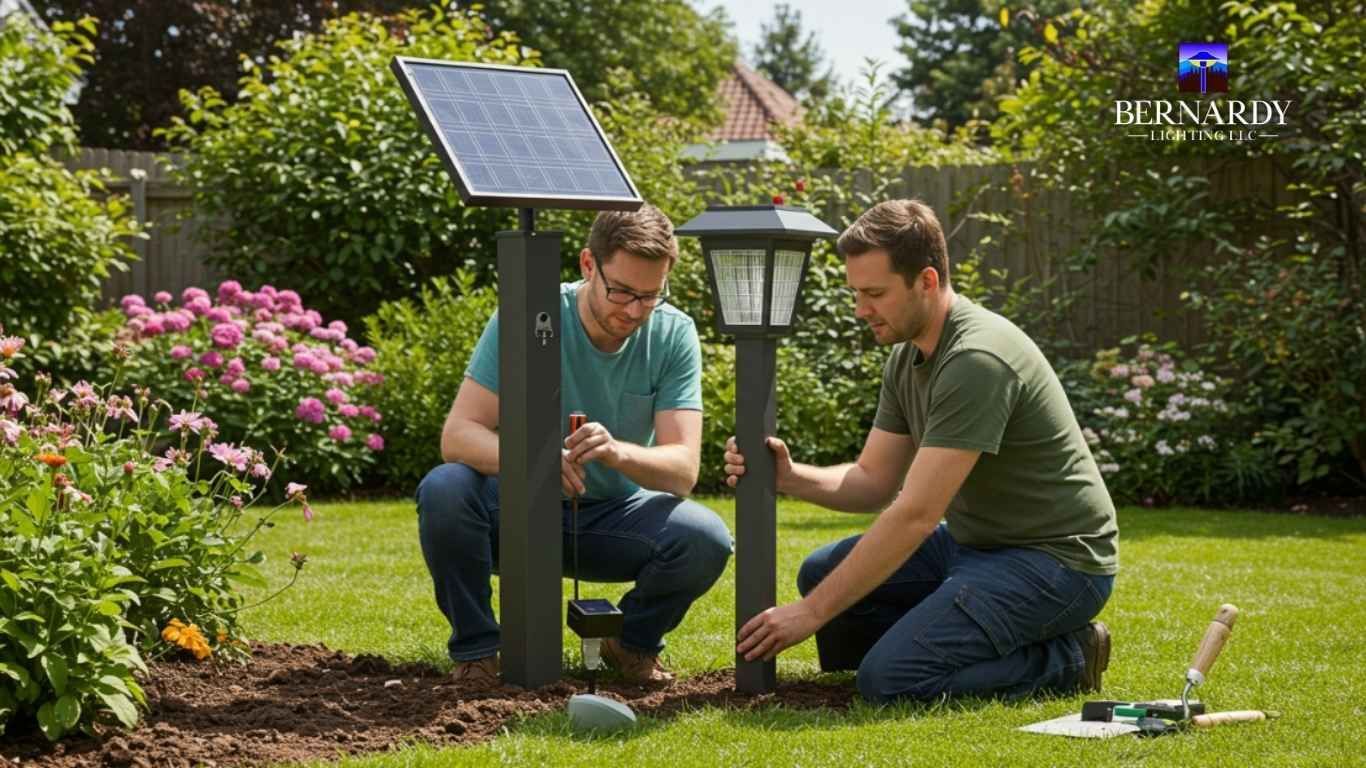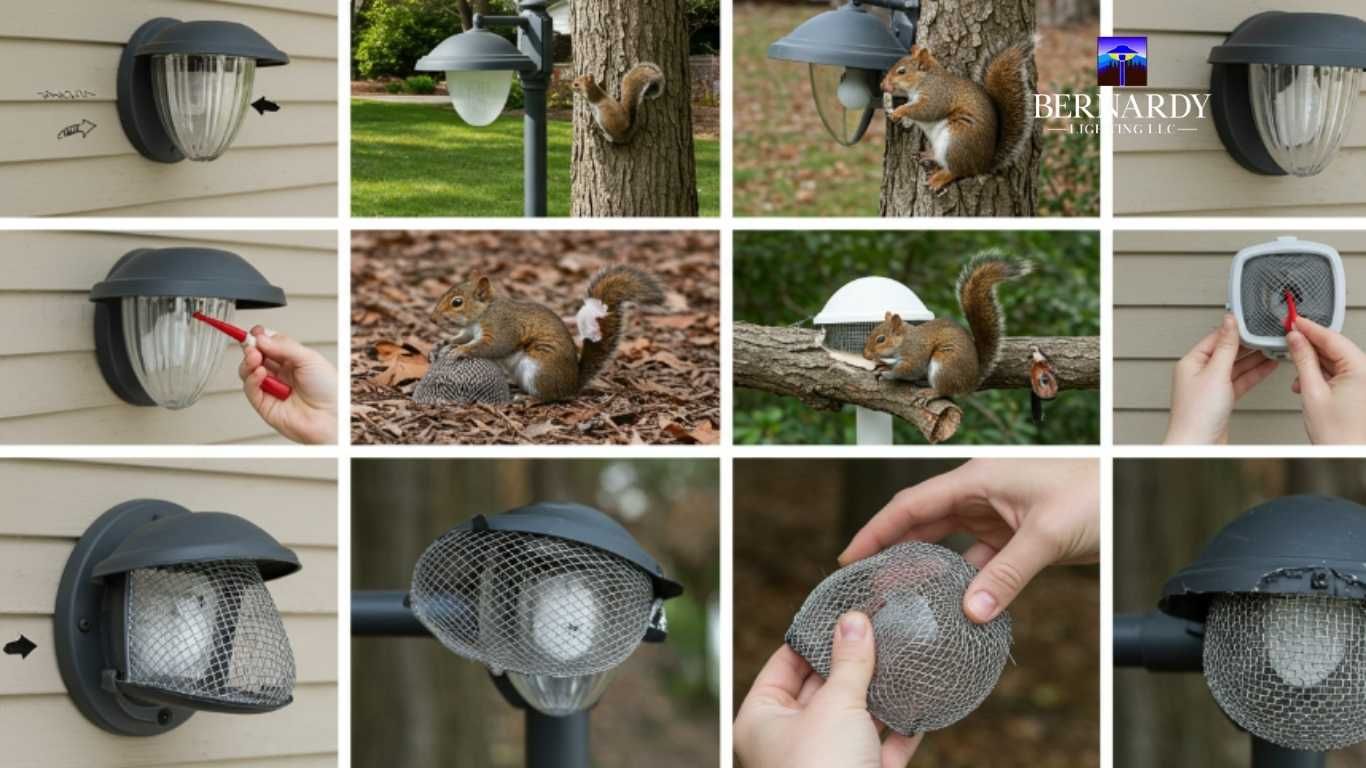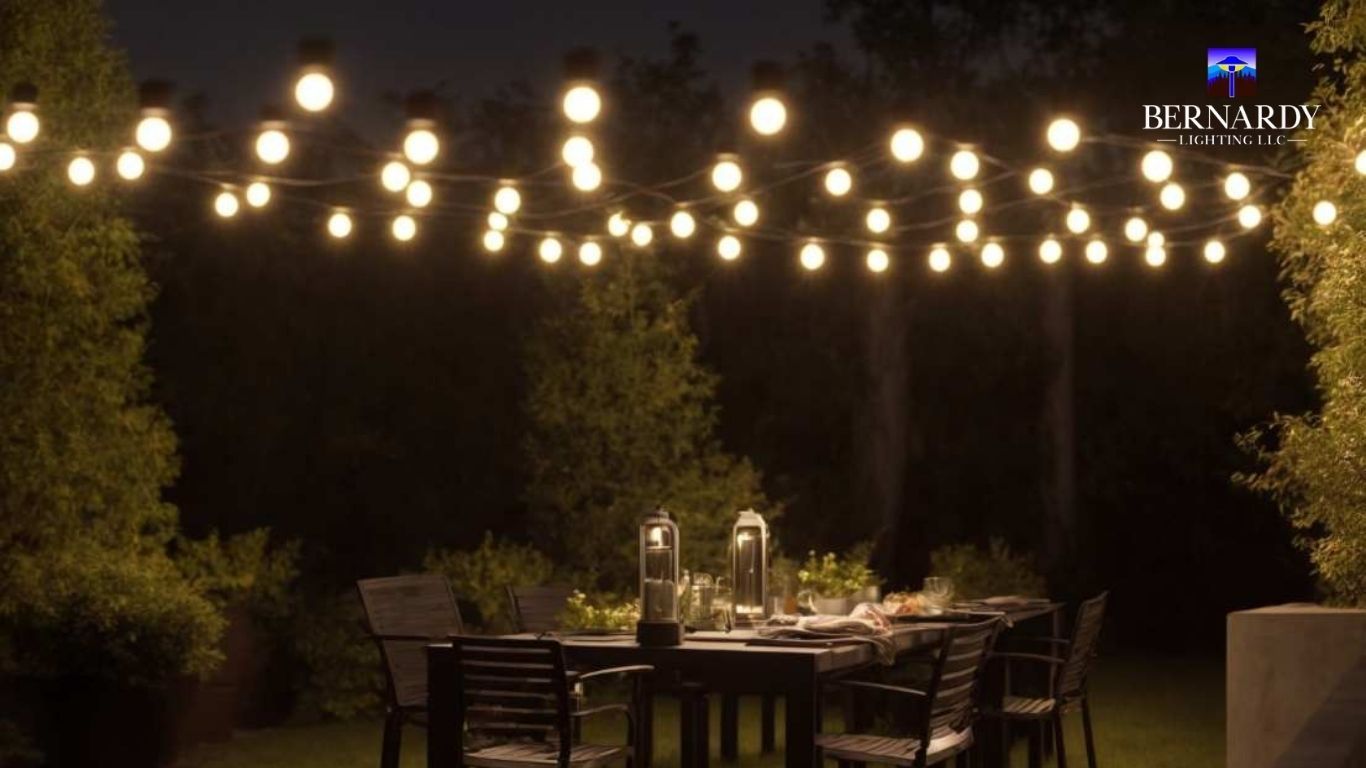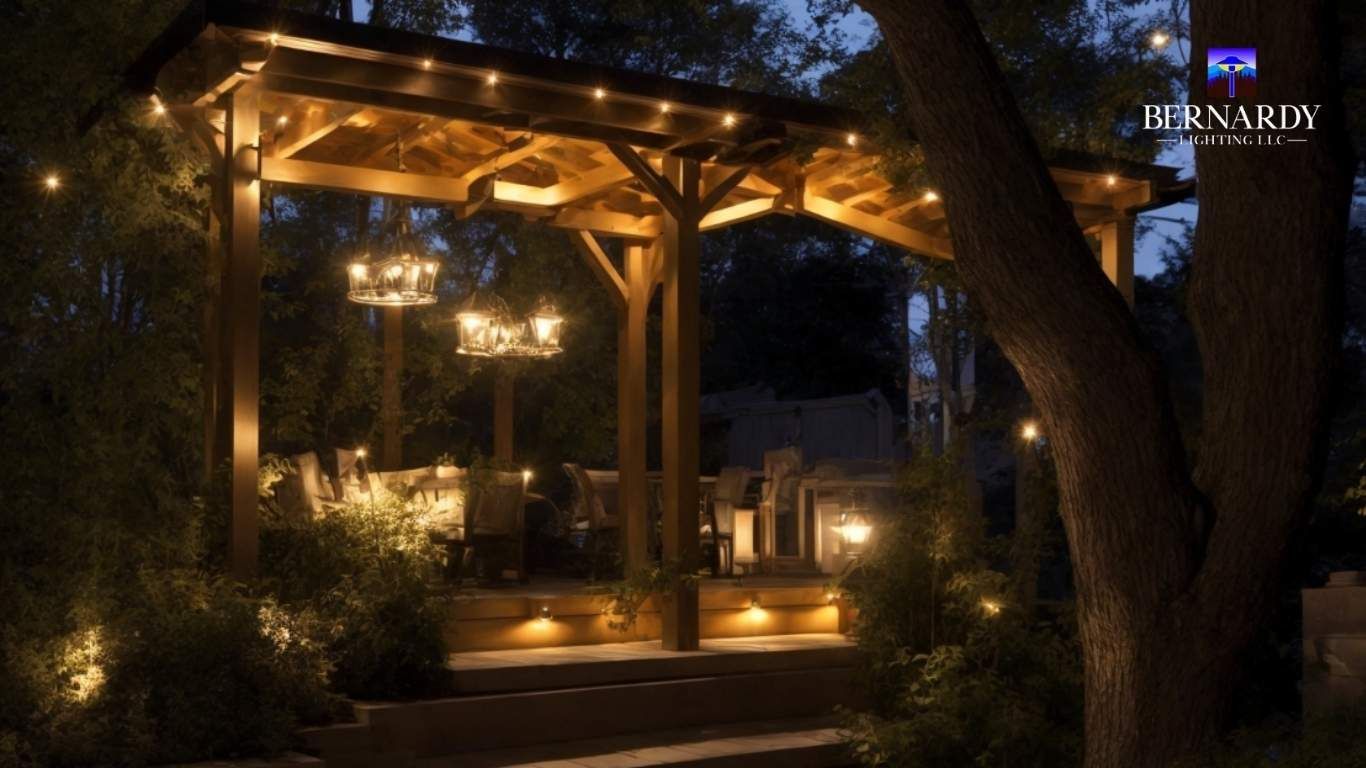How To Design Landscape Lighting Plan
Landscape lighting is a crucial element in enhancing the beauty and safety of outdoor spaces. A well-thought-out landscape lighting plan can transform your garden, patio, or backyard into a visually appealing and functional area that can be enjoyed both day and night.
Whether you aim to highlight architectural features, create cozy social spaces, or improve security, designing a landscape lighting plan requires careful planning and consideration of various factors. In this guide, we’ll walk you through the steps to create a landscape lighting plan that not only meets your needs but also adds value to your property.
To design an effective landscape lighting plan, start by sketching your property, define your lighting goals, select the appropriate fixtures, and determine the best wiring methods to ensure optimal illumination and energy efficiency.
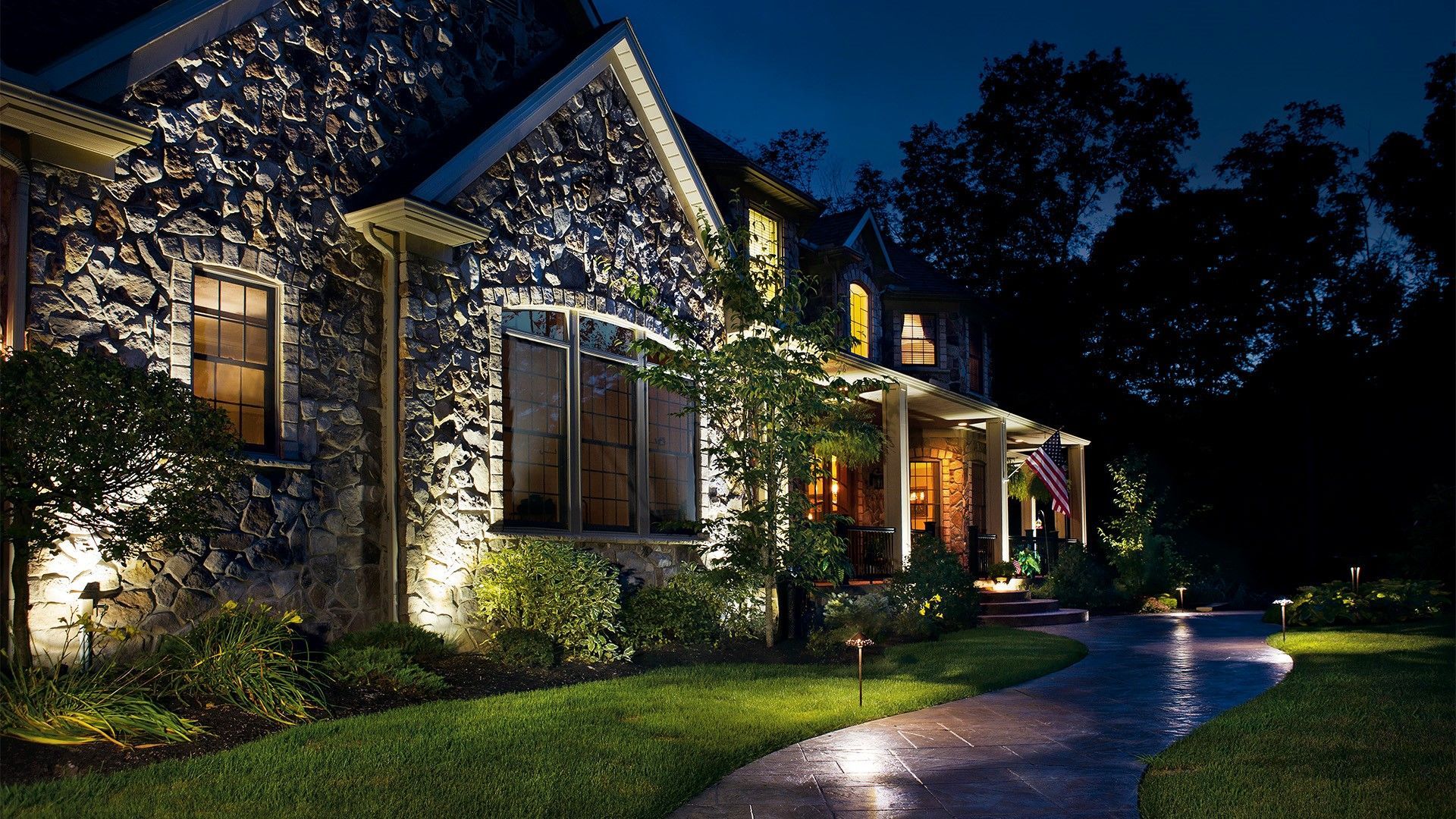
Start with a Sketch of Your Property
Begin by sketching a rough layout of your outdoor space. This drawing should include key features such as pathways, trees, gardens, water features, and any other elements you want to highlight with lighting. Use graph paper to make it easier to estimate distances and to ensure accuracy when positioning your lighting fixtures. The sketch will serve as a visual guide throughout the planning process and help you avoid common mistakes, such as over-lighting one area while leaving another in the dark.
Taking the time to create a detailed sketch allows you to visualize the entire area and make informed decisions about where to place your lights. Consider using color codes or symbols to mark different types of lighting fixtures, such as path lights, spotlights, or accent lights. This will help you stay organized and ensure that all areas of your landscape are adequately covered.
Define Your Lighting Goals
Consider what you want to achieve with your landscape lighting. Common goals include:
- Highlighting Architectural Features: Use lighting to draw attention to unique elements of your home, such as the façade, entryways, or special architectural details. This can create a dramatic effect that enhances the overall aesthetic of your property.
- Improving Safety: Illuminate walkways, stairs, and potentially hazardous areas to prevent accidents and make it easier to navigate your outdoor space at night. Properly placed lighting can significantly reduce the risk of trips and falls.
- Boosting Security: A well-lit yard can deter intruders and increase the overall security of your property. Motion-activated lights or strategically placed floodlights can make it difficult for anyone to approach your home unnoticed.
- Creating Social Spaces: Add lighting to patios, decks, and seating areas to make them more inviting for evening gatherings and outdoor dining.
Defining your goals will help you choose the right lighting techniques and fixtures for each area of your landscape.
Select the Appropriate Lighting Techniques and Fixtures
Based on your goals, select the lighting techniques and fixtures that will achieve the desired effect. Some common techniques include:
- Path Lighting: Ideal for illuminating walkways and garden paths, path lights should be spaced 6 to 10 feet apart for even coverage. LED path lights are energy-efficient and provide long-lasting illumination.
- Accent Lighting: Use accent lights to highlight specific features like trees, statues, or water fountains. The angle and intensity of the light are crucial to avoid harsh shadows or glare.
- Ambient Lighting: Soft, overall lighting that creates a welcoming atmosphere in social areas such as patios or decks.
When choosing fixtures, consider both functionality and aesthetics. Ensure that the fixtures blend with the landscape during the day and provide the desired lighting effect at night. Brands like Bernardy Lighting, LLC offer a range of fixtures designed for durability and aesthetic appeal.
Choose the Right Power Supply
Most landscape lighting systems use low-voltage power supplies, which are safer and more energy-efficient than standard line voltage. Choose a low-voltage transformer that can handle the total wattage of your lighting system while leaving a 20% buffer to avoid overloading. The transformer should be placed close to the house, ideally in a hidden location like behind a garden bed or near air conditioning equipment.
For optimal performance, consider using No-Ox® Marine-Grade Tin-Coated Landscape Lighting Wire, which offers high corrosion resistance and long-lasting conductivity. Selecting the proper wire gauge is essential to prevent voltage drop, especially for longer runs.
Determine the Best Wiring Method
There are several wiring methods to choose from, each with its advantages:
- Daisy Chain Method: Connects all fixtures in a series but may result in voltage drop at the end of the chain. This method is suitable for shorter runs or low-wattage setups.
- T-Method: Similar to the daisy chain, but the transformer connects to a fixture in the middle of the chain, saving wire.
- Hub Method: Sends wires from a central hub to each fixture, ensuring consistent voltage but using more wire. This method is ideal for grouped fixtures, such as in garden beds.
- Combination Method: A versatile approach that combines elements of the above methods to minimize voltage drop, reduce wire usage, and simplify installation. This is often the preferred method for LED systems, which have a wide acceptable voltage range.
For most LED systems, the combination method is preferred because it offers flexibility and efficiency.
Conclusion
Designing a landscape lighting plan requires a balance of creativity and technical knowledge. By starting with a clear sketch, defining your goals, selecting the appropriate fixtures, and choosing the right wiring method, you can create a beautiful and functional outdoor lighting system that enhances the beauty and safety of your property.
Whether you're highlighting architectural features, creating cozy social spaces, or improving security, a well-designed lighting plan can make your outdoor spaces come to life after dark.
FAQ Section
What is the best type of lighting for pathways?
Path lighting is ideal for illuminating pathways and garden paths. These lights should be spaced approximately 6 to 10 feet apart to ensure even coverage and prevent dark spots. Additionally, consider using fixtures with a low profile that blend into the landscape during the day but provide effective illumination at night.
How do I avoid voltage drop in my landscape lighting?
To avoid voltage drop in your landscape lighting system, it's important to choose the right wiring method and wire gauge. The hub method and combination method are effective at maintaining consistent voltage across all fixtures. Using thicker gauge wires, such as 12-gauge or 10-gauge, can also help prevent voltage drop, especially for longer runs. Ensuring that your total system wattage does not exceed 80% of your transformer's capacity is another crucial step in avoiding voltage issues.
Can I use solar lights for my landscape lighting?
Yes, solar lights are a popular choice for landscape lighting because they are easy to install and energy-efficient. However, they may not provide as much brightness or reliability as low-voltage wired systems, especially in shaded areas or during cloudy weather. Solar lights are best suited for areas that receive ample sunlight throughout the day. For more critical lighting areas, such as pathways and security zones, low-voltage LED systems may be more effective.
What should I consider when choosing a transformer for my lighting system?
When selecting a transformer, calculate the total wattage of your lighting system by adding up the wattage of all bulbs or integrated fixtures. Choose a transformer with a wattage capacity that exceeds this total by at least 20% to allow for a buffer. It's also important to select a transformer that is compatible with low-voltage lighting and can be easily installed in a safe, convenient location. VOLT® Lighting offers a range of transformers designed for landscape lighting systems.
How can I create a balanced lighting design?
To create a balanced lighting design, use a mix of different lighting techniques, such as ambient, accent, and path lighting. Ensure that the light intensity is consistent across all areas, and avoid over-lighting or under-lighting any part of your landscape. Consider the natural flow of your outdoor space and how light interacts with architectural features, trees, and other elements. Using adjustable fixtures and dimmable LEDs can help you fine-tune the balance of your lighting design, ensuring that your landscape looks beautiful and inviting at night.


